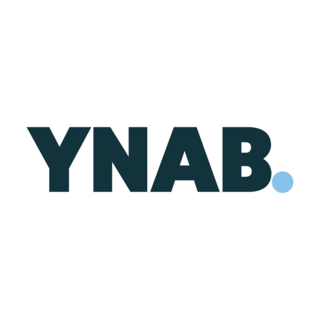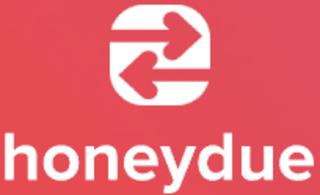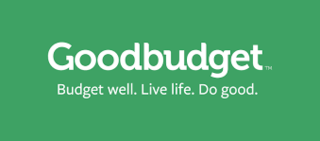5 Best Budgeting Apps
If you’re tired of starting Excel sheets only to forget about them, then a budgeting app might be just what you need. Budgeting apps offer spending trackers, bill-paying reminders and multiple account syncing to support you in taking control of your finances.
Read on for our list of the best budgeting apps of 2022, and a guide to their features, security and accessibility.
Our Top Picks for Best Budgeting Apps
- Mint – Best for young adults
- Simplifi by Quicken – Best for families
- YNAB – Best for college students
- Honeydue – Best for couples
- Goodbudget – Best for the envelope method
Best Budgeting Apps Reviews
- Easy access to your credit score
- Users can set weekly spending limits
- Syncs with your calendar for bill reminders
- Partners with Turbo Tax to offer tax filing services
- No free trial
- Basic version comes with ads
- Bill negotiation is not available for Android
Price: $0.99 a month for the ad-free basic version | $4.99 a month for Premium
Why we chose it: Mint is our top pick for young adults because of its social media-like features (like the #MoveMint stories), hashtags and notifications.
Mint is a highly rated budgeting app with a rating of 4.8 on the App Store and 4.4 on Google Play, with some users praising Mint's account overview and the convenience of having access to all of their accounts on one screen.
The app welcomes you with infographics about your net worth, spending, cash, investments, credit cards and loans. Mint shows recent transactions, overall expenses (entertainment, dining, or shopping), and purchase details (retailer, date, amount). It even celebrates your achievements and notifies you when you achieve a purchase-less day.
Mint lets you link your checking, savings or investment accounts, loans and credit cards from thousands of financial institutions. Data is secured by 256- encryption, multi-factor authentication and Touch ID. Additionally, Mint's account information can be deleted remotely if your mobile phone or device is lost or stolen.
The app also features #MoveMint, a fun social media story-like summary of all monthly expenses, savings and investments.
Users can import their TurboTax information, set weekly targets and track cash flow. For those who need extra help with their bills, Mint provides bill negotiation through BillShark. BillShark calls creditors for you and negotiates monthly bills and subscription payments for internet, phone and cable TV providers. (Note that users must pay BillShark 40% of what they save on each provider.)
Mint offers access to a free credit score report and daily credit monitoring through TransUnion. This app also offers bill and subscription tracking, a feature that notifies you when bills are due, if any price changes to monthly subscription services or if any extra fees are charged to your accounts.
One of Mint’s downsides might be its spending tracker’s faulty automatic categorization. Many users reported that the app wrongly categorized expenses, forcing them to change the category manually.
You can download an ad-free basic version of the Mint app for only $0.99 a month and the Premium version for $4.99 a month. Additionally, with the Invite a Friend program, users can earn $10 for every friend or family member that signs up.
- Automatically generated spending plan
- Links to your 401k account
- Transactions are automatically categorized
- Desktop and app versions share the same features
- Cannot import Quicken data
Price: $5.99 a month | $87.78 for a year
Why we chose it: Simplifi is our pick as the best budgeting app for families because its real-time spending tracking and automatically generated spending plan can make it easier for busy families and households to keep track of their spending.
Simplifi is a cloud-based app with real-time syncing through Android, iOS and web platforms. Users can connect their bank accounts, credit cards, loans, 401k and other investment accounts. Data is secured and transmitted using 256-bit encryption.
You don’t have to link your financial institution to set up an account with Simplifi. Accounts and expenses can also be manually set. However, note that you’ll have to enter your expenses one at a time, which can be time-consuming for most people.
Simplifi lets you set multiple financial goals and helps you stay on track to meet them. Say you want to take your dream European vacation next year but also save for a house, you can add those goals to your spending plan and Simplifi will prompt you to save a certain amount each month. To further help you stay on top of your financial goals, Simplifi also features cash-flow projections and financial reports.
Families and household members can benefit from Simplifi’s real-time syncing of different devices. If you’re the household money manager, Simpifi allows you to track (in real-time) all expenses, bill payments and saving goals. If you’re too busy to create your own budget, Simplifi will automatically generate a spending plan. (A spending plan is a budgeting method where, after you pay your bills and save some of your income, the rest is distributed between the things you want or need.) This is automatically generated and fully customizable, allowing you to adapt it to fit planned or unexpected expenses.
Simplifi’s easy-to-follow dashboard shows top spending categories, spending plans and recent transactions. Users can also set alerts for when a large purchase is made, a payment is received, or when the spending budget starts to run low.
With a 30-day free trial, Simplifi allows users to try the app’s full version before committing to its yearly or monthly subscription options. Simplifi also offers chat and phone sessions with coaches who can help answer your questions about the app.
- 34-day free trial
- Available for desktop, Apple Watch, Alexa, iOS and Android
- Hundreds of financial planning and education videos
- Customer support seven days a week
- 4.8 rating on the App Store and 4.6 on Google Play
- No bill-paying feature
Price: $14.99 a month | $98.99 a year
Why we chose it: You Need a Budget (YNAB) gives college students a free one-year subscription, making it our top choice for students starting to take control of their budget.
YNAB is a budgeting app launched in 2004 that focuses on four budgeting rules:
- Prioritize your income
- Save money each month to cover future expenses
- Only spend money that has been in your bank account for at least 30 days
- Be flexible with unexpected expenses
To set up an account with YNAB, you need to have your bank account logins, monthly bills (dollar amounts and due dates) and an estimate of your non-monthly expenses (car maintenance, dentist appointment, weekend trip). However, if you don’t want to link your account, the app allows you to enter all information manually.
YNAB is based on the envelope budgeting system. With this budgeting system, you create expense categories (rent, groceries, phone bill, credit cards) and place a spending limit on them. For example, you create an envelope for your monthly groceries, another for utilities and another for rent. To successfully apply the envelope method, you need to assign the amount of money you will spend on each of those that month and stay within the limit. You can track your envelopes and see a complete picture in YNAB’s report section.
Staying within a limit might feel challenging but part of YNAB’s method is to help you spend less money than you earn until most of your expenses are covered by money that has been in your account for more than 30 days. However, if unexpected expenses occur, you can adjust the spending limits in your envelopes or even borrow from another one. Envelopes can also be used for long-term financial goals like a down payment for a home or retirement.
Data is secured by bank-grade encryption. If you decide to close your YNAB account, all of your budget data will be destroyed and removed from the company’s database. However, if your account lapses or your trial ends, the company saves your information for up to three years.
YNAB is pricier and requires a more hands-on approach than other apps on this list. It doesn’t include bill tracking or bill-paying features that are included in other apps for a lower subscription price. Still, YNAB has a simple dashboard with budget, accounts, transactions and help sections. Users can also find educational videos, articles and live Q&A sections.
Honeydue: Best for couples
- Supports over 20,000 financial institutions in five different countries
- Bill-paying reminders
- Available in Spanish, English or French
- Send messages to your partner through the app
- No educational resources available
- Doesn't allow users to set savings goals
- Customer service response can take more than a day
Price: Free
Why we chose it: Honeydue is one of our top picks because it’s designed specifically for couples, gives each user their own profile and lets them message each other through the app.
Honeydue is a free budgeting app and online bank service created for couples. With Honeydue, each partner has a personalized profile where they can see their monthly budget and upcoming bills. They can each get bill-paying reminders and split expenses. Additionally, while partners share the account, they can choose to keep some information private as well.
Honeydue has a social media-like feed displaying recent purchases and lets partners message each other through the app. Users can customize their dashboard and choose between budget, bills, transactions, slip expenses or notifications.
An additional password, pin number, two-factor authentication and Face ID can be added for extra security. Data is encrypted in storage and transit.
In addition to the budgeting app, Honeydue offers Joint Cash, an FDIC-insured joint bank account that doesn’t charge fees or require a minimum balance. You can link your Joint Cash account to the app for easy account tracking and withdraw money from more than 55,000 ATMs nationwide.
One drawback is that the app doesn’t allow users to set savings goals or access a desktop dashboard. Full access to the app is available without a subscription, however, there is no option to get rid of ads within the app.
- Doesn't require account linking
- Sync and share budgets
- Track debt-payoff process
- Offers a free version
- Free version only allows linking to one account
- Only 10 envelopes or categories in free version
Price: $8 a month | $70 a year
Why we chose it: Goodbudget offers an easy-to-use, digital version of the envelope method – a time-tested budgeting technique that consists of creating individual envelopes to portion out income into different spending categories.
Goodbudget lets you budget using a digital version of the envelope system and keeps your data safe using 256-bit bank-grade encryption. This budgeting method requires that you divide your monthly income in different envelopes or categories. The amount assigned to that envelope is the sum total of what can be used to cover spending for that category.
With Goodbudget, you create the categories and assign an amount to be saved weekly, monthly, or within the time you decide works best. For example, you have $1,000 to divide between five envelopes:
- Rent: $500
- Groceries: $150
- Bills: $100
- Entertainment: $100
- Delivery services: $200
- Total: $1,000
Goodbudget shows you those envelopes in its main dashboard so you can easily keep track of how much you have left in each. Every envelope has a purpose (groceries, rent or vacations, for example) and it can be used to cover regular expenses, big purchases or savings.
You can link saving, checking or credit card accounts, loans, or investment accounts for effortless transaction syncing. In fact, one of Goodbudget’s best features is the option to sync and share budgets and upcoming bills with your friends, partner or any member of your household.
Goodbudget also features graphs showing debt payoff progress, spending by envelope and comparing income vs. spending. Users can also access courses, articles and podcasts to learn more about financial planning and management.
One drawback is that, while its Plus subscription plan includes unlimited envelopes, accounts and syncing of up to seven devices, the free version only lets you create up to 10 categories.
Other companies we considered
The following companies feature account linking (bank and credit unions), saving goals and customization but fall short on aspects like availability and lack of features. Take a look to see if these apps fit your financial management needs.
Buddy
Price: $4.99 a month | $34.99 a year
Buddy is a money management app developed in Sweden with more than 16,000 reviews on the App Store. The app offers an easy-to-follow dashboard with sections dedicated to transactions, budgets, accounts and tools. It’s fully customizable and provides an overview of the user’s net worth. Buddy is not part of our list because it’s not available on the Google Play store.
- 7-day free trial
- Expense tracker
- Share with others and sync expenses
- Bill-paying reminder
- Only available for iOS
- Subscription plan pricing is high for the features it offers
Pocketguard
Price: $4.99 a month | $34.99 a year
One of Pocketguard’s best features is that it shows your available spending balance after deducting bills, goals and necessities. Users can create an account to track cash transactions or add other accounts not automatically linked to the app. Pocketguard is not part of our main list because the basic version isn't customizable, doesn’t import or export transactions and doesn’t allow the user to set goals.
- 7-day free trial
- Data is secured with 256-bit SSL encryption
- AutoSave feature sets an amount to be automatically set aside each month
- Spending tracker
- Expensive subscription
- Free version is not fully customizable
Fudget
Price: $3.99
Fudget is a budget-friendly option for those who want a simple, no-frills budgeting app. You can download the full version for a one-time payment of only $3.99. Note that you can’t link your bank account to Fudget, so you’ll have to manually enter all expenses, bills and payments. It’s not part of our top list because it doesn’t offer a free trial and lacks features (including account linking) that most competitors offer.
- One-time payment of $3.99
- Information can be exported
- No free trials
- No account linking
- Manually enter all information
Mvelopes
Prices: Basic: $5.97 per month | Premier: $9.97 per month | Plus: $19.97 per month
Mvelopes is another app that follows the envelope system. Users can create a spending plan, link their bank accounts and monitor their balance with its basic subscription; however; it’s not part of our top list because the basic version lacks most features offered by the paid subscriptions.
- 30-day free access with Premier or Plus subscription
- 30-day money-back guarantee
- Partners with around 16,000 financial institutions
- Video courses to help clients increase their financial literacy
- Basic subscription lacks most features
Personal Capital
Personal Capital is a financial management app for those with over $100,000 in investable assets. Clients pay an annual fee based on the size of their investment portfolio. It’s an option for those with the capital to pay for these services, including an educational cost planner, investment checkups and cash flow tracker. It’s not part of our top list because of its limited accessibility.
- Link IRA and 401k accounts
- Budgeting is organized by date, category or merchant
- Cash flow tracker
- Retirement planner
- Only available for those with over $100,000 in investable assets
- Services are fee-only
Stash
Stash is a personal finance planner app focused on investment management. Its basic subscription includes savings and budgeting tools, a personal investment account, financial advice and $1,000 of life insurance coverage through Avibra. Stash is not part of our top picks because it focuses on investment management and not budgeting.
- Subscription plans start at $1 a month
- All plans include life insurance coverage
- One-month free trial
- Upgrade, downgrade or cancel your subscription plan at any time
- Not focused on budgeting
Budgeting Apps Guide
Whether you prefer to use a budget or a spending plan, budgeting apps can be a great tool to improve your money management skills. In addition to account overview and expenses tracker, budgeting apps offer useful tools like free credit reports, loan payoff plans and bill payment reminders.
In this guide, you can find information about how budgeting apps work, accessibility, security and features.
What are budget apps and how do they work?
Budgeting apps can help you keep track of your bills, monitor your daily expenses and set savings goals. Some can even automatically create a spending plan and categorize your expenses.
Not all budgeting apps work in the same way. Some budgeting apps let you link to your financial institution, which allows for real-time syncing of your expenses. In other words, anything you pay with a debit card will be reflected in the app.
If you don’t feel comfortable linking your account to an app, note that some budgeting apps give you the option to manually enter every expense, monthly payment, or savings account like YNAB, Goodbudget and Fudget.
Budgeting apps also offer different methods. Some apps focus on a specific style like the envelope system or the pay-yourself-first method. Choosing a budgeting system will depend on the purpose of your budget and how much time and effort you’re willing to put in.
How to choose the right budget app for you
You can download most budgeting apps free of charge, but most require subscriptions or a one-time payment to provide access to all of their features. Before selecting a budgeting app, make sure to compare features, prices, accessibility and the type of security it offers.
Price
There is a budgeting app for every type of budget. Some budgeting apps are free, while others offer monthly or yearly subscription plans. Monthly subscriptions for some of the apps on this list range from $0.99 to $14.99. Choosing a budgeting app subscription plan depends on which features are essential for you and which ones you can do without.
Accessibility
An accessible budgeting app should have all or most of these characteristics:
- Be available for Android and iOS devices
- Offer an affordable paid version
- Give free trials
- Provide the option to share with other members of the household
Features
Every budgeting app offers different features to keep your finances under control. When choosing one, consider which of these tools will support you in meeting your financial goals:
- Account sync and connection: connect and link a variety of accounts (loans, credit cards, savings, checking accounts and investments). This makes it easier to have a complete picture of your finances and plan accordingly.
- Spending tracker: connecting your accounts and credit cards to one place allows you to keep track of every expense and transaction.
- Bill payment reminder: setting up customizable reminders, linking loans or credit card accounts can help you avoid late fees and other unnecessary expenses.
- Loan payoff plan: if you’re looking to pay off your debt, many budgeting apps offer support in creating a debt payment strategy or plan to pay loans and credit cards as quickly as possible.
- Sharing/splitting bills: this feature simplifies splitting rent and other utilities between members of the household. It helps with tackling expenses and other financial responsibilities.
Some budgeting apps offer other features such as options to create an investment portfolio, open a joint bank account or apply for credit cards. Some can even give you access to your credit score, which is an essential step in taking control of your finances.
(For other ways to access your credit score, read our guide, How to Check Your Credit Score.)
Security
Most budgeting apps prompt you to link your financial accounts so it can keep track of expenses and provide bill-paying reminders automatically.
If the privacy of your financial information is a concern, make sure to look at the type of encryption the app uses. Most use end-to-end encryption, 128 or 256-bit and two-factor authentication. Also, creating a unique and strong password for your account can help secure your information. Password managers are a useful tool to securely store and generate strong passwords.
Avoid taking the security of your data for granted. Keep your personal and financial information safe with identity theft protection services. Read on to learn more about the best identity theft protection services, types of identity theft scams and tips on how to prevent it.
Best Budgeting Apps FAQ
What is the difference between a budget and a spending plan?
A spending plan organizes expenses in a less restrictive way than a budget, allowing you to decide and manage how you'll spend your money. With a spending plan, you should separate part of your monthly income for savings and some of it to pay your bills, the rest can be spent any way you choose.
With a budget, your full monthly income is divided between categories (rent, groceries, bills, clothes, dining out) and must be used for that purpose. You categorize and manage your spending, save money, pay bills and even invest. Budgeting requires more work and time than a spending plan.
Are budgeting apps worth it?
Budgeting apps are worth it if you take the time to create a budget, track your spending and stay within your limits. Some subscription plans offer services like financial counseling, bill negotiation and free credit reports. Others allow for unlimited account linking, goal settings and customizable notifications to only receive news about the financial aspects you care about.
Compare apps and features, and take advantage of free trials before deciding which budgeting app works best for you.
How safe are budgeting apps?
What is the best budgeting app?
How We Chose the Best Budget Apps
To create the list of the best budgeting apps, we evaluated 15 different applications. We considered different features such as availability for iOS and Android devices and customers’ ratings in Google Play and the App Store. However, we paid special attention to these features:
- Free trial availability and subscription plans: We think it’s important that users try out the app for at least a month before paying for a monthly or annual subscription. We gave preference to those apps that provided at least a 30-day trial.
- Account linking: While most apps let you enter expenses and account information manually, we preferred apps that let you link your account to your bank. This can save you time and effort, and ultimately, can provide a more accurate overview of your finances.
- Data safety: Safety is a must when managing financial and personal information. Our top picks offer bank-rate encryption and two-factor authentication.
Summary of Money’s Best Budgeting Apps of 2022
- Mint – Best for young adults
- Simplifi by Quicken – Best for families
- YNAB – Best for college students
- Honeydue – Best for couples
- Goodbudget – Best for the envelope method






